Q
how much is honda civic 2018
If you're looking at a used 2018 Honda Civic in Malaysia, you're probably looking at a price tag between RM70,000 to RM100,000. Of course, the exact figure hinges on things like how well the car's been kept, mileage, trim level, and where you're shopping. For instance, the 1.8L S trim sits more towards the lower end of that range, while the fully-loaded 1.5L Turbo RS will nudge closer to that RM100k mark.
This Civic holds its value pretty well locally, thanks in no small part to that Earth Dreams engine tech and sporty chassis setup. The turbocharged variants, in particular, get a lot of love for their peppy performance and decent fuel economy – a solid combo.
A quick heads-up if you're in the market: make sure to check the condition of the CVT gearbox and the body panels. Malaysia's tropical heat can be tough on rubber components, so that's something to keep an eye on.
In terms of competition, used Toyota Corollas and Mazda3s are in the same ballpark price-wise. But where the Civic really shines here is in its modification potential and how easy it is to get your hands on aftermarket parts – that's a big plus in Malaysia. If your budget's a bit tighter, you could also look at similarly-aged national models like the Proton X70 or Perodua D55L, though you can expect a difference in driving feel and brand cachet.
Special Disclaimer: This content is published by users and does not represent the views or position of PCauto.
Related Q&A
Q
How much does it cost to replace a timing belt on a 2018 Honda Civic?
The cost to replace the timing belt on a 2018 Honda Civic typically ranges from RM800 to RM1500. The exact price depends on the type of repair shop, whether original or aftermarket parts are used, and if components like the water pump are replaced at the same time. A genuine belt kit plus a water pump can push the total cost close to RM2000. As a critical engine component, the timing belt should be replaced every 60,000 to 100,000 kilometers or around 5 years. A broken belt can cause catastrophic damage from valve-piston collisions. Beyond the belt itself, professional technicians usually recommend replacing the tensioner and idler pulleys together for system stability. Note that some models use a timing chain design which doesn’t require regular replacement. When choosing a repair shop, verify they use legitimate parts and have Honda-specific experience—improper installation shortens belt life. Regularly checking for cracks or wear on the belt also helps prevent sudden failures.
Q
Is the 2018 Civic a safe car?
The 2018 Honda Civic shines when it comes to safety, packing in a solid lineup of active and passive safety tech. You've got your standard stuff like Vehicle Stability Control, Anti-lock Braking System, multiple airbags, and a rigid body structure—all working together to keep occupants protected when crash tests put it to the test. Step up to the higher trims, and you'll get Honda SENSING, which adds some pretty advanced features: adaptive cruise control, lane keeping assist, and collision mitigation braking, just to name a few. These definitely give peace of mind on the road. Behind the wheel, the Civic feels steady and the brakes are reliable too, making it a solid choice for everyday driving. If you're looking to dig deeper into car safety, checking out crash test ratings is a good move—think ASEAN NCAP or Global NCAP scores. They give you a better overall picture of how a car holds up. And don't forget, regular maintenance—keeping an eye on tires, brakes, and other key parts—is just as crucial for staying safe out there.
Q
How is the 2018 Civic's ride quality?
The 2018 Civic delivers well-balanced ride comfort in its class. The suspension tuning leans sporty but still works for daily use – the front MacPherson strut and rear multi-link setup does a solid job filtering out small road vibrations. That said, rear passengers will feel noticeable jolts when going over speed bumps or rough roads, which ties back to its stiffer spring rates.
On the NVH front, tire noise gets a bit pronounced at highway speeds, but engine insulation is nicely done. The 1.5T turbo engine stays at low revs during cruising, keeping things calm. The seats have just the right amount of padding – supportive enough for long drives without feeling too firm. Steering feel is sharp with good road feedback, not overly sensitive.
Notably, this generation Civic has 25% stiffer body rigidity than the previous model, resulting in more stable cornering posture. This design boosts handling while also indirectly improving ride stability during quick lane changes. If comfort is a higher priority, go for the factory 17-inch wheel option – it offers better shock absorption compared to the 18-inch version. And don’t forget to regularly check tire pressure and suspension bushing condition; both have a big impact on overall ride quality.
Q
Is a used 2018 Civic a smart buy now?
The 2018 Honda Civic is a solid value pick as a used car right now. It strikes a good balance between power, space, and fuel economy. The 1.5T turbo engine delivers plenty of pep while keeping gas mileage reasonable, making it good for both daily commutes and longer drives. The interior is roomy, especially the rear legroom which beats out many competitors, and the trunk space is enough for family use too.
In terms of reliability, it has a pretty low failure rate, routine maintenance costs are reasonable, and parts are easy to come by at decent prices. But keep an eye out for the oil dilution issue that some early batches had—definitely check the service records or get a professional inspection.
Used prices have stabilized now, offering a nice discount compared to buying new, but when you buy, pay attention to mileage, accident history, and maintenance upkeep. I’d recommend looking for a car still under the original factory warranty or consider purchasing an extended warranty.
The Civic has a big local presence, so it’s relatively easy to resell when you’re ready, and its resale value is above average for the class. You could also check out the same-year Toyota Corolla or Mazda3, but the Civic has the edge when it comes to driving fun and interior space, making it a great fit for buyers who want practicality with a bit of driving enjoyment.
Q
What should I pay for a 2018 Honda Civic?
The used car prices for the 2018 Honda Civic typically range from RM60,000 to RM90,000, depending on factors like vehicle condition, mileage, trim level, and maintenance records. The 1.8L S trim is relatively more affordable, while the top-spec 1.5L Turbo RS is closer to the upper end of that range. It's advisable to check specific quotes through used car platforms or dealerships before buying, and also pay attention to inspecting for accident history or regular maintenance certificates. As a popular model, the Civic holds its value well and has a solid reliability record, especially the 1.5T turbo engine which strikes a good balance between power and fuel efficiency, making it suitable for daily driving. If you're on a tighter budget, you could consider competitors of similar age, but be sure to compare configurations and after-sales support. Additionally, if financing the purchase, it's recommended to compare interest rate plans from different banks to reduce long-term ownership costs.
Q
What is the AC problem in the Honda Civic 2018?
The 2018 Honda Civic has air conditioning issues mainly centered around inconsistent cooling performance or reduced airflow, which are usually related to condenser leaks, low refrigerant levels, or compressor failures. Some owners have reported that the AC efficiency drops significantly in hot weather. If you encounter such problems, it's advisable to first check the refrigerant pressure and inspect the condenser for damage. Regularly replacing the cabin air filter in daily use can effectively maintain air circulation efficiency, while avoiding prolonged use of the recirculation mode to prevent overloading the system. It's important to note that the AC system performance of all vehicles will naturally degrade over time, so regular maintenance is key—like checking the refrigerant condition every two years and cleaning dust and debris from the condenser fins to improve heat dissipation. If you experience intermittent cooling failures, it might be due to a clogged expansion valve or poor electrical connections, which require diagnosis by a professional technician using pressure gauges. Additionally, using a sunshade when parking in summer to reduce interior heat buildup can significantly lower the load on the AC when starting up.
Q
What engine is in a 2018 Civic?
The 2018 Honda Civic offers a range of engine options depending on the market. The most common is the 1.5-liter turbocharged four-cylinder (code-named L15B7), which features VTEC technology. It puts out around 174 horsepower and 220 Nm of peak torque, mated to either a CVT or a 6-speed manual transmission. It delivers a balanced performance with excellent fuel economy, making it perfect for daily driving. Additionally, some regions get a 2.0-liter naturally aspirated four-cylinder (code-named K20C2) with 158 horsepower and 187 Nm of torque. While it's a bit less powerful than the turbo version, it's simpler in structure and has lower maintenance costs. It's worth noting that the 2018 Civic Type R comes with a high-performance 2.0-liter turbo engine (code-named K20C1), though that's a special edition model. For most buyers, the 1.5T engine is the more mainstream pick. It provides plenty of torque at low revs, and Honda's Earth Dreams technology ensures good fuel efficiency, traits that help it stand out in its class.
Q
How many miles can a 2018 Civic last?
The 2018 Honda Civic can typically last between 200,000 to 300,000 miles (about 320,000 to 480,000 kilometers) with regular maintenance and proper use. Its actual lifespan depends on factors like driving habits, maintenance frequency, and road conditions. The car's 1.5T turbocharged engine or 2.0L naturally aspirated engine are known for reliability, paired with either a CVT transmission or 6-speed manual, making the powertrain quite durable. Regularly changing key fluids like engine oil, transmission fluid, and brake fluid, along with timely inspections of tires, brake pads, and suspension components, can significantly extend the vehicle's life. It's worth noting that the Civic holds its value well and performs strong in the used car market, which is another indicator of its long-term dependability. If you frequently drive in congested cities or use it for short trips, consider shortening maintenance intervals to reduce carbon buildup and mechanical wear. Additionally, the hot and humid climate in Southeast Asia can affect rubber parts and electronic components, so regular checks on these items can help prevent potential issues. Overall, with proper care, this car is more than capable of accompanying you for over 10 years or even longer.
Q
What is the gas mileage on a 2018 Honda Civic?
The fuel efficiency of the 2018 Honda Civic varies depending on the powertrain configuration. The version equipped with a 1.8-liter naturally aspirated engine has a combined fuel consumption of approximately 6.5 liters per 100 kilometers, while the 1.5-liter turbocharged model is more efficient, with a combined fuel consumption of around 5.8 liters per 100 kilometers. Actual fuel consumption may vary slightly based on driving habits, road conditions, and maintenance status. Thanks to the optimized pairing of the Earth Dreams technology engine and CVT transmission, this car strikes a good balance between fuel economy and power response, making it suitable for daily commuting and long-distance driving. To further improve fuel efficiency, it is recommended to regularly maintain the air filter and tires, avoid sudden acceleration or speeding, and keep an eye on whether tire pressure is at the recommended level. Among models in its class, the Civic's fuel efficiency is above average, balancing practicality and economy, making it a solid choice for consumers who value vehicle operating costs.
Q
What is the trade-in value of a 2018 Honda Civic?
The used car valuation for a 2018 Honda Civic typically ranges from RM70,000 to RM90,000, with the exact price depending on factors like vehicle condition, mileage, trim level, and service history. The 1.8L S trim, being the base model, usually sits at the lower end, while the top-spec 1.5L Turbo RS can get close to the upper limit. There are a few key points to consider when valuing a used Civic. First is mileage – ideally around 15,000 km per year; anything over 20,000 km annually might impact the price. Second is service records – a complete dealer service history can boost residual value by about 5% to 8%. On the flip side, accident-damaged or flood-affected cars will take a huge hit, depreciating by 30% to 50%. It’s a good idea to get a free appraisal from an authorized Honda dealer before selling and also compare quotes from multiple used car dealers. With the recent increase in used car supply, there might be more room for negotiation. If you’re thinking about trading it in for a new car, some dealers offer trade-in bonuses that could be better than selling directly, but make sure to check if the new car discount and old car valuation balance out. Understanding these factors will help you get a fairer price in the transaction, and it’s also recommended to get a vehicle inspection report from a third-party service to build buyer confidence.
Popular Cars
Model Year
Car Compare
Car Photo
Latest Q&A
Q
How powerful is 2 horsepower?
2 horsepower converts to approximately 1491.4 watts (or 1.4914 kilowatts) in the International System of Units. From a practical experience perspective, 1 horsepower is equivalent to the power output required to carry a 10-kilogram load and run 100 meters in 13 seconds. Therefore, the intensity of 2 horsepower is about twice that level—for example, it can carry a 20-kilogram load to complete 100 meters in 13 seconds, or carry a 10-kilogram load to finish the distance in a shorter time. In daily application scenarios, 2 horsepower falls into a relatively small power range, far lower than the typical 100-200 horsepower output of a family car engine. It is commonly found in small mechanical equipment such as some garden pruning tools, small water pumps, or lightweight agricultural auxiliary machinery, which need to continuously output small power to complete specific tasks. It should be noted that there are distinctions between imperial horsepower and metric horsepower, but the imperial horsepower conversion standard is usually adopted by default in daily use.
Q
What is the lifespan of a 2HP motor?
The lifespan of a 2HP motor is influenced by multiple factors such as usage frequency, maintenance practices, operating environment, and motor type. When used correctly under rated conditions and maintained regularly, its average lifespan typically ranges from 10 to 15 years. However, if it operates for a long time in high-temperature, humid, or dusty environments, or runs under frequent overload, its lifespan may be shortened to 5 to 8 years. In practical application scenarios in Malaysia, such as small pumps for automotive auxiliary systems or small industrial drive motors (if they are of 2HP specification), choosing high-quality brand products and following standardized maintenance procedures (such as regular cleaning, checking lubrication, and electrical connections) can effectively extend the service life. Additionally, the manufacturing process and material quality of the motor also affect its lifespan, and products from reputable brands usually have better durability guarantees. It should be noted that timely replacement of worn parts and avoiding long-term continuous overload operation are key measures to maintain the motor in good condition.
Q
How fast does 2 hp go?
The speed corresponding to 2 horsepower varies depending on the vehicle type and design. Taking electric two-wheelers as an example, 1 horsepower is approximately equal to 0.7457 kilowatts. Referring to relevant model data, an electric two-wheeler equipped with a motor of about 2 kilowatts (approximately 2.68 horsepower) can reach a maximum speed of 62 km/h. Therefore, a vehicle with 2 horsepower has a speed roughly ranging from 55 to 60 km/h.
Such vehicles are typically suitable for short-distance urban commuting scenarios. Some models also feature two riding modes: economy and sport. The full-charge range can reach 105 km, and charging from 0 to 80% takes approximately 6 hours. They also come with a 2-year or 20,000-kilometer warranty. Some models may qualify for subsidies under local policies, further improving commuting cost-effectiveness. The design of these vehicles meets urban transportation needs while balancing practicality and convenience.
Q
How many kW are in 2HP?
The result of converting 2HP to kilowatts (kW) varies slightly depending on the type of horsepower: if it is British mechanical horsepower (commonly used in automotive and other fields), 2HP is approximately equal to 1.49kW (accurate value is approximately 1.4914 kW); If it is metric horsepower (also known as horsepower), 2HP is approximately equal to 1.47kW (accurate value is approximately 1.471kW). In practical applications, such as engine power labeling or motor parameters, approximate values are sometimes used to simplify 2HP to 1.5kW for quick reference. Horsepower (HP) and kilowatts (kW) are both units of power. The former originated from measuring mechanical power (such as steam engines and horse pulling force), while the latter is an internationally recognized unit of power standard. The conversion relationship between the two needs to be determined according to specific definitions, and the choice in different scenarios will affect the final conversion result.
Q
What is the power of a 2 hp motor?
The power of a 2 hp motor can be derived through the conversion between horsepower and the international standard unit of power. HP, or horsepower, has two common standards: imperial and metric. 1 imperial HP is approximately equal to 745.7 watts, while 1 metric HP is about 735 watts. When converted using the metric standard, the power of a 2 hp motor is 2 × 735 = 1470 watts (i.e., 1.47 kilowatts); when using the imperial standard, it is approximately 2 × 745.7 ≈ 1491.4 watts (around 1.49 kilowatts). In practical applications, different standards may be adopted in different scenarios, but a common approximation in the industry is that 2 hp is roughly equal to 1.5 kilowatts. Horsepower is a traditional unit of power, often used to describe the output capacity of equipment such as motors and engines. However, in the International System of Units, watts or kilowatts are more recommended as units of power. Therefore, in formal technical documents, horsepower values are usually converted to watts or kilowatts for labeling to ensure the uniformity and accuracy of technical communication. Mastering such unit conversion relationships helps to accurately understand the power output capacity of motors in scenarios such as equipment selection and performance evaluation.
View MoreRelated News

Honda Civic Interior Revealed: A Comprehensive Analysis of Civic’s Interior Charm
Kevin WongJul 10, 2025
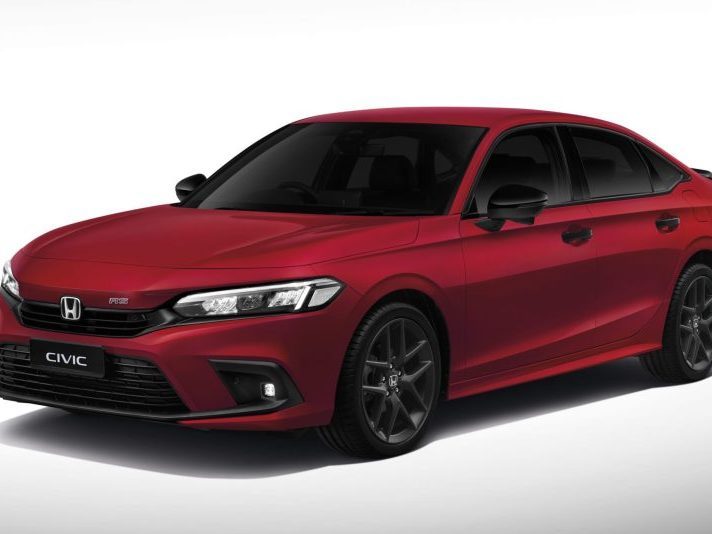
Honda Civic Price Revealed: The Most Detailed Buying Guide!
AshleyApr 8, 2025
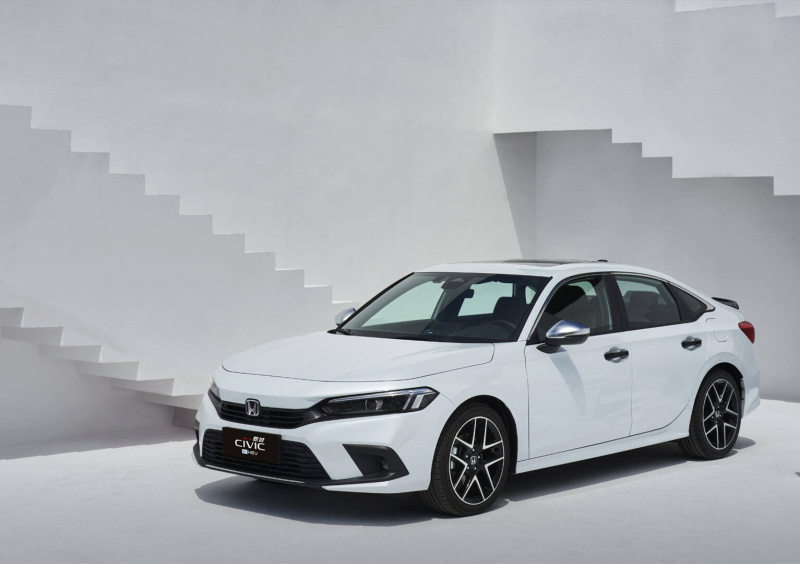
Whether it's about appearance or handling, why do young people all like Honda Civic?
WilliamSep 24, 2024
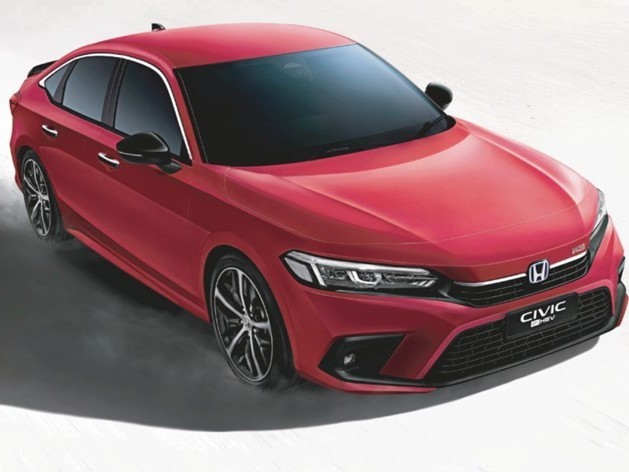
2022 Honda Civic: Hybrid car with the fastest acceleration, lowest fuel consumption, who says eco-friendly cannot be fast
JohnSep 3, 2024
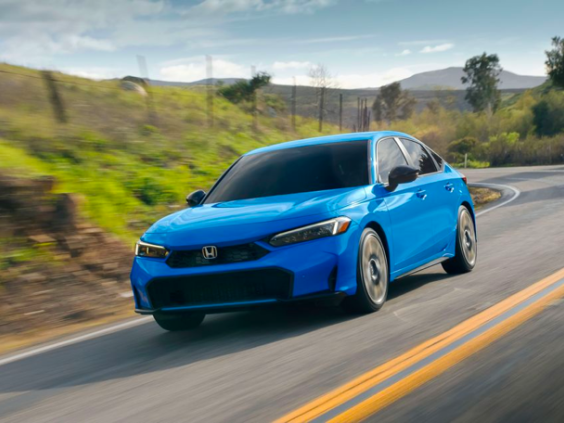
2025 Honda Civic debuts, minor changes in appearance, has 1.5 Turbo model been discontinued?
LienMay 22, 2024
View More





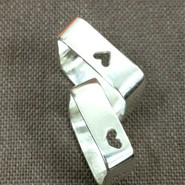







 Cars
Cars




Pros
Cons